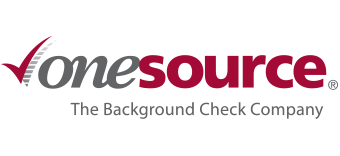Leveraging AI in Human Resources
Subject matter experts agree that we’re currently amid an Artificial Intelligence boom due to its recent generative form (Reuters). That’s why, in May, Colorado made national news as the first state to pass extensive legislation regarding AI employment decision making (Seyfarth). Although Colorado isn’t the first state government to set their sights on the technology, the Centennial State is the first to enact regulations this broad. According to HR Dive, previous adopters of AI employment regulations include Illinois, Maryland, and New York City, focusing their efforts on video interview evaluations, facial recognition, and yearly audits, respectively.
With states like Connecticut, New York, Washington, and more drafting regulations of their own, it’s a good time to consider how your organization can prepare to get ahead of the game. Read on for our suggestions on how to go from AI novice to pro in no time.
Start With Understanding
The best way to start is by understanding the laws that are being enacted by discussing them with your legal counsel. Employers may also consider closely monitoring the topic of AI and “be prepared to rapidly retool their practices and protocols,” notes Ravin Jesuthasan, Senior Partner at Mercer, in an interview with UNLEASH. After understanding the legislation at play and the reasons they’re necessary, you can begin to combat one of the most persistent narratives we’ve heard in recent years: AI will replace all our jobs.
These technologies will certainly replace aspects of our day-to-day, but the focus of Human-Centered AI is to use Human Intelligence (HI) to either reduce the amount of time tedious tasks take or remove them from your team’s plates entirely. In a SHRM webcast, AI+ Executive-in-Residence Nichol Bradford spoke of a Gucci case study in which their customer support staff were supported by AI in this manner. The result was a more relaxed team with the capacity for genuine conversations with passionate customers. Of course, Gucci is a global enterprise, but smaller organizations may notice more of an impact when it feels like each team member has several assistants. Once you realize that your team can flourish given the appropriate support, the economic value of these systems becomes clearer.
The Value of AI Maturity
DoorDash is another prominent example of a business that recognized such value. According to a case study from Replicant, a generative AI development company, DoorDash reached out to them for help developing a solution targeting pain points of their end-to-end ordering experience as polled from staff and customers. They identified outbound food ordering calls as inefficient and costly and within six weeks of replacing the call center that was performing them, Replicant’s voice AI achieved a 94% success rate.
Both Gucci and DoorDash were lucky to have AI+HI Catalysts—staff members who facilitate AI adoption while utilizing HI to consider the impact on employees—on board. The fashion label gained a 30% increase in revenue while the food delivery giant significantly reduced cost per order and increased both customer satisfaction and profitability. In both cases, they examined their priorities, investigated the root causes, and applied tailored solutions. To achieve similar objectives in your organization, consider following their examples and remember to keep fairness, transparency, and privacy in mind when working with vendors.
So, if you’re looking to leverage AI in your organization, consider these three phases:
- Recognize the benefits AI offers and keep your staff at the forefront of adoption discussions.
- Understand the regulations in place, as well as those that may come.
- Be mature and responsible in AI deployment.
As AI models rapidly learn and improve and further constraints are legislated, you can be certain that One Source is keeping our eyes and ears open for any changes in compliance regulations. In the meantime, if you need other ways to streamline your background screening process like ongoing monitoring, integrations, or eSign capabilities, get in touch.










